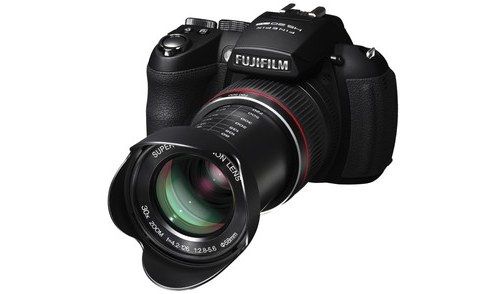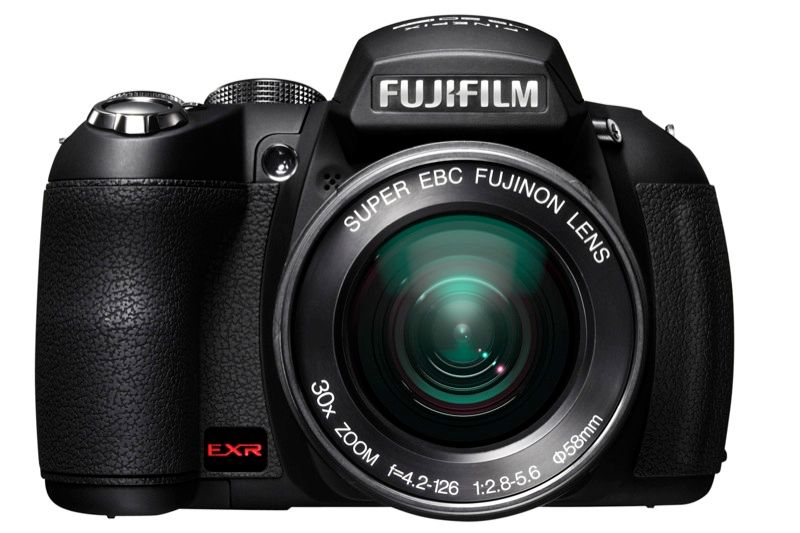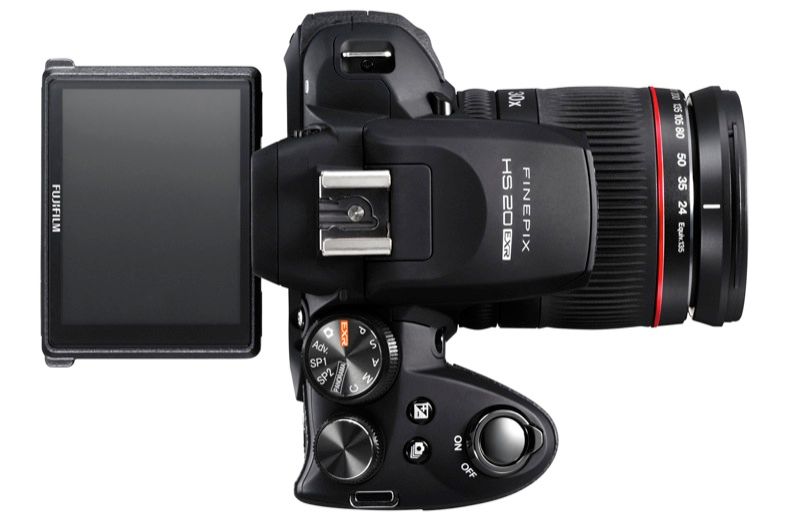The Fujifilm FinePix HS20 EXR ups the ante in an already bustling superzoom market; one that’s being going from strength to strength in recent years - Fujifilm’s original HS10 and Canon PowerShot SX30 IS being two exemplary models that have helped to raise the bar. However, despite all their various goodness, there’s still that gap in the market for yet more honed-in perfection - so can the Fujifilm FinePix HS20 EXR (or FinePix HS22 EXR for our Japanese friends) live up to the hype?
Our quick take
The Fujifilm FinePix HS20 EXR hardly re-invents what the previous HS10 model, though it’s still a highly-specified superzoom with an attractive and rangey 24-720mm manual zoom.
For all of its plus points there are certain areas (such as the viewfinder quality) that fall just short of the mark and other small niggles (like the awkwardly-placed flash that interferes with the manual zoom) which see the HS20 EXR shy of greatness. This may be forgiven if image quality was extra special, but that highly-populated 16-megapixel sensor won’t see the most critical of picture-lovers outwardly impressed. It’s perfectly good for standard day-to-day snaps, but it’s not encroaching on DSLR territory.
Superzoom cameras often pose a variety of issues though, and given what the market is like the HS20 EXR is most definitely up there at the top end. There are only one or two other models that could put up a fight for the superzoom crown, and with that considered the HS20 does offer plenty of kick for the cash. That manual zoom is a (currently) unique feature that will no doubt entice in purchasers and it is things like this that still see the HS20 as a winner.
Certainly good, just not quite as great as it could have been.

Fujifilm FinePix HS20 EXR - 4.0 / 5
| FOR | AGAINST |
|---|---|
|
|
Delivering a 30x optical zoom (24-720mm equivalent), the HS20 EXR is more than packing when it comes to focal length. Add to this image-based stabilisation and shots should be steady even at the fullest zoom range, though it’s disappointing not to see a lens-based stabilisation system that would help out when framing shots. The fact the lens can be quickly zoomed through using the manual zoom (no zoom rocker/toggle to be found here) is a significant plus point, though there’s no difference in optics nor layout over the previous HS10 model. This presents a bit of a design issue as the protruding built-in flash gets right in the way of fully rotating the zoom. Furthermore the manual focus ring is set right to the back of the lens itself and feels awkward in use given its position.
On the rear is a 3-inch, 460k-dot LCD screen on a vertical-tilt bracket, above which is a 200k-dot electronic viewfinder. Although the LCD sees a resolution increase, the viewfinder is the very same outlay as with the previous HS10 model. Not an immediate issue, but the low resolution and small size of the viewfinder can limit its effectiveness in use. Saying that, in bright light where the screen is not easily visible and where extra support is needed to steady long-range shots, the viewfinder is an absolute essential.
For the HS20 to be a true step above and beyond the HS10, Fuji should have really taken it back to the drawing board, redesigned the camera’s layout, ironed out some of the more imposing issues, repositioned the flash and upgraded the viewfinder to a more impressive specification. Then this would have been one mean superzoom, but our wishful thinking can’t always be delivered all in one go.
There are some important changes beneath the HS20’s skin. As the “EXR” name suggests, the latest EXR processing technology helps to improve the back-illuminated 16-megapixel sensor’s operation. The sensor itself, although rectangular, has its light diodes mounted at a 45° angle to ensure light lands more effectively and the back-illumination means the wiring is moved to the back of the sensor for less disruption of light passing. This provides more light for a cleaner signal and, so the theory goes, a “cleaner” and better quality final image. However, escalating a small compact-sized sensor to a full 16-megapixels is a bit of a risk, and one the HS20 doesn’t really benefit from. At full resolution images are “smeary” and lacking in definition.
Images can be shot from ISO 100-3200 and there’s an extra boost for “extended” ISO 6400-12,800 shots (at lower resolutions) as well. Despite all the technological wizardry behind the scenes, the final image quality may not quite live up to expectations. Let’s not mistake the HS20 EXR for a DSLR as, quite clearly, it’s not. But the lack of absolute pin-sharpness, image noise and processing visible even in the very lowest of ISO settings the overall results do leave a little lacking.
We’d suggest using the HS20 at the lower 8 megapixel setting for yet further enhanced dynamic range and some extra sharpness. Popping the camera into its “EXR” mode on the top dial and the camera will, on many occasions, opt to do this automatically though not all the time, which can leave control over final image quality that little bit unpredictable.
In terms of convenience, the HS20 is a great camera that will deliver good results for your everyday subjects. That big focal range delivers shallow depth of field for blurred backgrounds, plus the metering system and high dynamic range coped well even with backlit subjects to ensure good subject exposure in all kinds of scenarios. At the widest 24mm setting it’s possible to shoot at F/2.8, which stops down to F/5.6 at the 720mm top-end - still impressive given the equivalent focal ranges.
In addition to JPEG files, the HS20 can also capture RAW files with the click of a button. The availability to quickly toggle this feature on or off using the one-touch RAW button will please those looking for more control over particular images, and the bundled Silkypix software provides a platform to process files. However a RAW + JPEG Fine frame will take some 7 seconds to churn through the buffer, during which time the camera cannot refocus or take another shot.
As well as stills the HS20 EXR can also muster 1080p HD movies using the H.264 compression codec. As per many stills cameras attaining focus during movie recording can be tricky, and the HS20 is a culprit at over and under-focusing when set to the full-time autofocus option. The only other focus option is a centre-point focus that cannot be adjusted (short of the manual focus ring) during capture.
To recap
The Fujifilm FinePix HS20 EXR is a fairly subtle upgrade over the previous HS10. The 24-720mm manual zoom is a unique and attractive feature that certainly sees the HS20 as a winner, but it’s a variety of subtle letdowns and so-so image quality that leave this model just shy of greatness



